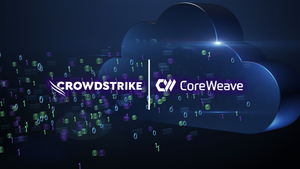
As of November 7, 2025, the U.S. financial landscape presents a perplexing dichotomy: a soaring S&P 500 index defying a visibly weakening broader economy. This significant divergence, characterized by a robust, yet narrowly-driven stock market rally contrasting with a struggling labor market and underlying economic uncertainties, has become a central point of discussion among economists, investors, and policymakers alike. The market's resilience, largely fueled by a handful of mega-cap technology giants, raises critical questions about the sustainability of current valuations and the true health of the nation's economic foundation.
This unprecedented gap between equity returns and declining job openings signals a potentially profound structural shift, rather than a mere cyclical fluctuation. It suggests a "K-shaped" recovery is firmly entrenched, where high-income earners and specific, technologically advanced sectors prosper, while broader segments of the economy and the workforce face increasing headwinds. The implications are far-reaching, from heightened market volatility and systemic risk for investors to complex policy challenges for a Federal Reserve navigating a landscape where traditional economic indicators seem to be telling a different story than the stock market.
A Tale of Two Economies: Unpacking the Divergence
The current divergence is not merely a statistical anomaly but a deeply entrenched phenomenon with specific drivers. The S&P 500 has demonstrated impressive strength, achieving approximately a 16% gain by November 2025 and extending a seven-month rally, pushing the index towards 7,000 points. October alone marked its sixth consecutive winning month, a streak not observed since 2018. Goldman Sachs projects a 10% return for the S&P 500 in 2025, buoyed by anticipated economic expansion and steady earnings growth.
However, this market buoyancy is overwhelmingly concentrated. Over 41% of the S&P 500 Index's performance hinges on just 10 companies, a level of concentration significantly higher than the historical average of 24% between 1880 and 2010. Mega-cap technology companies, particularly those heavily invested in artificial intelligence (AI), such as Amazon (NASDAQ: AMZN) and Microsoft (NASDAQ: MSFT), have been the primary beneficiaries. This narrow leadership is starkly revealed when comparing the S&P 500's performance to its equal-weighted counterpart, which has shown a much weaker performance with a 0% price return over the past 12 months.
In stark contrast, the U.S. economy exhibits several signs of distress. The labor market, once a beacon of strength, is deteriorating rapidly. Job cuts surged by an alarming 183% in October 2025 compared to the previous month and were 175% higher than in October 2024. Year-to-date, job cuts have reached 1.10 million, a 65% increase year-over-year, marking the highest level since the 2008-2009 financial crisis and the initial shock of the pandemic in 2020. Hiring plans are at their lowest point since 2011, leading some economists to coin the term "jobless boom." Since October 2022, job postings have declined by approximately one-third, while the S&P 500 has concurrently risen by 75%. Consumer sentiment has also fallen significantly, with the University of Michigan's monthly Survey of Consumers dropping to 53.6 in October from 70.5 a year ago.
The Federal Reserve has responded to these economic headwinds by initiating interest rate cuts, citing "downside risks" to employment. This monetary policy shift contrasts with Europe, where interest rates are expected to fall below 2%, while U.S. rates are anticipated to remain around 4%. While U.S. real GDP is currently growing "pretty fast," with Goldman Sachs forecasting 2.5% real GDP growth for 2025, the OECD projects a slowdown to 1.6% in 2025, with inflation nearing 4% by year-end due to elevated import costs. Corporate earnings, outside of the dominant tech firms, are also feeling the pinch, with many traditional industrial companies grappling with rising input costs and a volatile global trade environment.
Winners and Losers in a Divergent Market
The current market environment has created a distinct divide between winning and losing sectors and companies, amplifying the "K-shaped" economic narrative. At the forefront of the winners are the mega-cap technology companies, particularly those heavily invested in artificial intelligence. Companies like Amazon (NASDAQ: AMZN) and Microsoft (NASDAQ: MSFT) have seen their valuations soar, driving a significant portion of the S&P 500's gains. Their robust balance sheets, innovative product pipelines, and perceived leadership in the AI revolution have made them investor darlings, attracting substantial capital flows. The focus on corporate efficiency and profitability, often achieved through AI integration and strategic layoffs, further bolsters their appeal to investors seeking growth in a challenging economic climate. These firms are not only expanding their market share but are also redefining industry standards, forcing competitors to adapt or risk obsolescence.
Conversely, the broader market and traditional industrial sectors are struggling. Many companies outside the tech sphere are contending with weakening consumer demand, rising input costs, and a volatile global trade environment. The "jobless boom" illustrates this perfectly; while tech giants are innovating and expanding, traditional employers are shedding jobs at an alarming rate. Small and medium-sized businesses, which are often more sensitive to economic downturns and labor market shifts, are particularly vulnerable. Sectors heavily reliant on consumer spending, such as retail and hospitality, face headwinds from declining consumer sentiment and potential decreases in disposable income among a significant portion of the population. Companies with less diversified revenue streams or those slow to adopt technological advancements are finding it increasingly difficult to compete, leading to weaker earnings reports and a less optimistic outlook for their stock performance. The disparity in performance between these two groups is a key characteristic of the current market divergence, highlighting a structural shift in how value is created and captured in the modern economy.
Wider Implications and Historical Context
The divergence between the S&P 500 and the U.S. economy carries wider significance, reflecting and contributing to several profound industry trends. The most prominent is the accelerating impact of technological disruption, particularly the rapid adoption of artificial intelligence. AI is not just a buzzword; it's a transformative force reshaping labor markets, redefining corporate value creation, and concentrating wealth and opportunity within a select group of highly innovative companies. This technological shift is a primary driver of the "K-shaped" recovery, where the benefits of economic growth are disproportionately captured by those at the top of the economic hierarchy and in the tech sector.
The ripple effects of this divergence are extensive. Globally, the U.S. market's concentration in tech giants influences international trade and central bank policies. The S&P 500's net income growth significantly outpaces its European counterparts, like the Stoxx 600, underscoring a global divergence driven by U.S. tech firms. This can lead to capital flight from less dynamic markets and pressure on other nations to foster their own tech innovation or risk falling further behind. Competitors and partners in traditional industries face immense pressure to adapt, either by integrating AI into their operations or by finding niche markets that remain resilient. Regulatory bodies are also facing new challenges, as the unprecedented market concentration raises concerns about antitrust issues, market manipulation, and the systemic risks posed by the potential failure or slowdown of a few dominant players.
Historically, periods of significant market concentration have often preceded periods of increased volatility or correction. While the current situation is described as unprecedented, particularly the gap between robust equity returns and declining job openings since the inception of the Job Openings and Labor Turnover Survey (JOLTS) in 2002, some draw parallels to the dot-com bubble of the late 1990s. During that era, a narrow group of technology and internet stocks drove market gains, only to see a sharp correction when the underlying economic realities failed to support the elevated valuations. However, proponents of the current tech-led rally argue that today's dominant companies possess stronger fundamentals, established revenue streams, and tangible technological advancements (like AI) that justify their valuations, differentiating them from the speculative nature of many dot-com era companies. Nonetheless, the extreme concentration introduces systemic risk, making the broader market vulnerable to any significant setback faced by these highly valued firms.
What Comes Next: Navigating an Uncertain Path
Looking ahead, the path for both the U.S. economy and the S&P 500 is fraught with both opportunities and challenges, demanding careful navigation from investors and strategic pivots from businesses. In the short term, the market's reliance on mega-cap tech stocks, particularly those in the AI space, is likely to continue. Investor sentiment remains strong for these innovators, anticipating further breakthroughs and market dominance. However, this concentration also presents a significant risk. A negative earnings report, regulatory scrutiny, or a shift in investor confidence concerning just one or two of these dominant players could trigger a sharp market correction, given their outsized influence on the index. The Federal Reserve's ongoing interest rate cuts, while intended to support the broader economy, may have limited immediate impact on the flourishing upper segment of the "K-shaped" recovery, potentially exacerbating the divergence.
In the long term, the sustainability of this "jobless boom" and the extreme market concentration will be closely watched. Companies are increasingly prioritizing efficiency and AI integration, a trend that could lead to further strategic layoffs and a permanent reshaping of the labor market. This necessitates strategic pivots for businesses, focusing on lean operations, technological adoption, and potentially reskilling their workforce to remain competitive. For investors, diversification across asset classes—including large-cap quality stocks, longer-duration bonds, international equities, and real assets like gold and real estate—is becoming increasingly critical to mitigate the risks associated with concentrated market exposure. Market opportunities may emerge in sectors that successfully integrate AI to enhance productivity, or in those resilient to economic downturns, such as utilities or consumer staples.
Potential scenarios and outcomes vary. One scenario suggests a continuation of the AI-driven boom, with technological advancements continuing to propel market leaders, even if the broader economy remains subdued. Another scenario posits a significant market correction if the underlying economic weaknesses, particularly in the labor market and consumer spending, eventually catch up to elevated valuations. Furthermore, the anticipated policies of a new U.S. administration, including aggressive trade measures, tax cuts, and immigration changes, could lead to higher short-term growth and inflation, potentially compelling the Fed to adjust its rate-cutting trajectory. These policy shifts introduce another layer of uncertainty, making it imperative for market participants to remain agile and adaptive to evolving economic and political landscapes.
A Market at a Crossroads: Final Thoughts
The current divergence between the U.S. economy and the S&P 500 is a defining financial event of 2025, underscoring a complex and evolving economic paradigm. The key takeaway is the unprecedented concentration of market gains within a narrow band of mega-cap technology companies, driven primarily by the AI revolution, while the broader economy grapples with a weakening labor market and subdued consumer sentiment. This "K-shaped" recovery highlights significant economic inequality, where technological advancement benefits a select few, leaving other sectors and segments of the population struggling.
Moving forward, the market faces a crossroads. The sustainability of AI-driven growth and the ability of the broader economy to catch up to market valuations will be critical determinants of future performance. The Federal Reserve's monetary policy, coupled with potential shifts in U.S. administration policies, will play a crucial role in shaping the economic landscape. The extreme market concentration introduces systemic risks, making the S&P 500 vulnerable to any significant challenges faced by its dominant constituents.
Investors should approach the coming months with heightened caution and a focus on resilience. Diversification across various asset classes is not just advisable but essential to navigate the inherent volatility. Watching for signs of broader economic improvement, particularly in the labor market and consumer spending, will be paramount. Additionally, monitoring regulatory developments concerning tech giants and any shifts in global trade policies will provide crucial insights into the market's future direction. The current environment is a testament to the transformative power of technology, but also a stark reminder of the potential for economic disparity and the complexities of modern financial markets.
This content is intended for informational purposes only and is not financial advice






